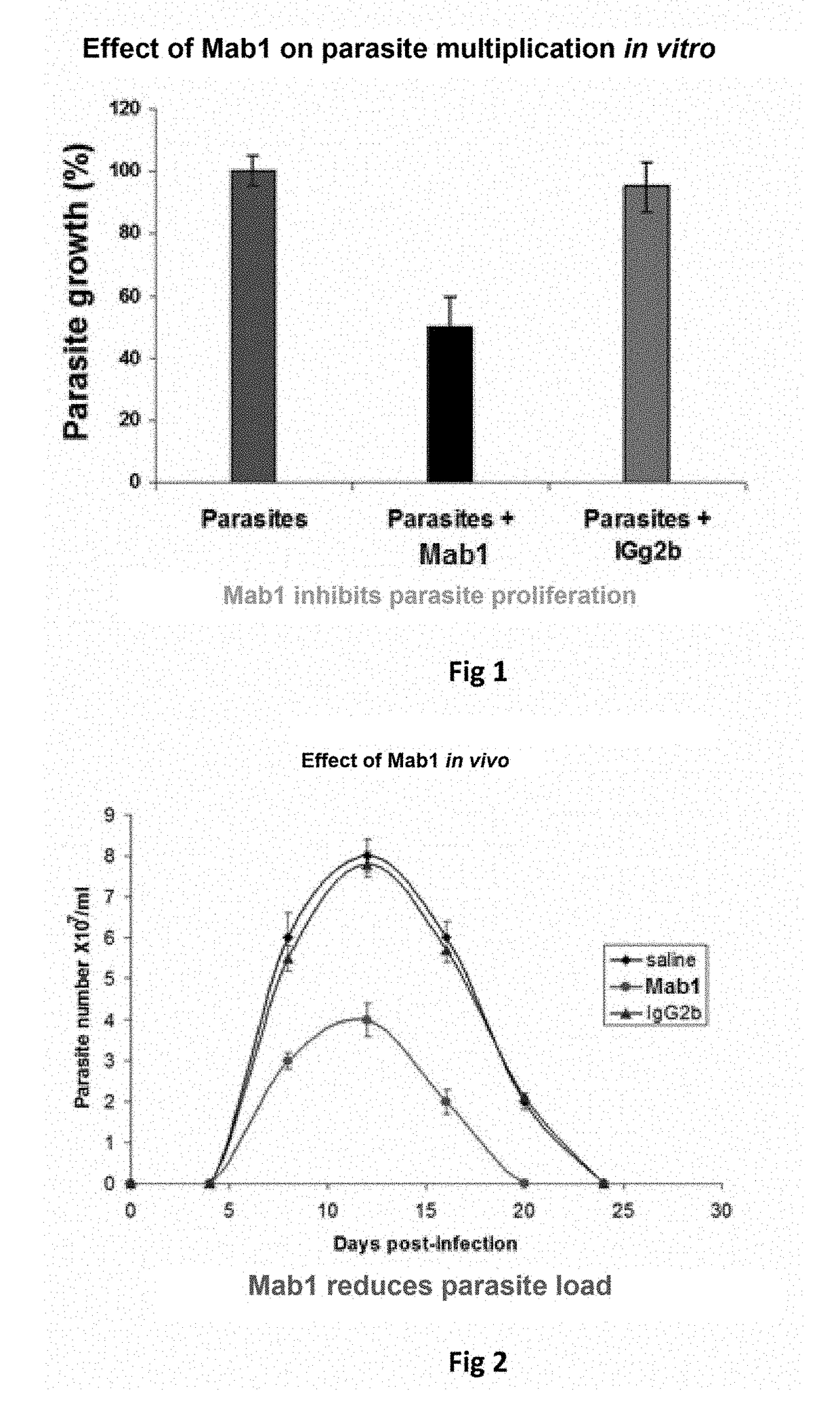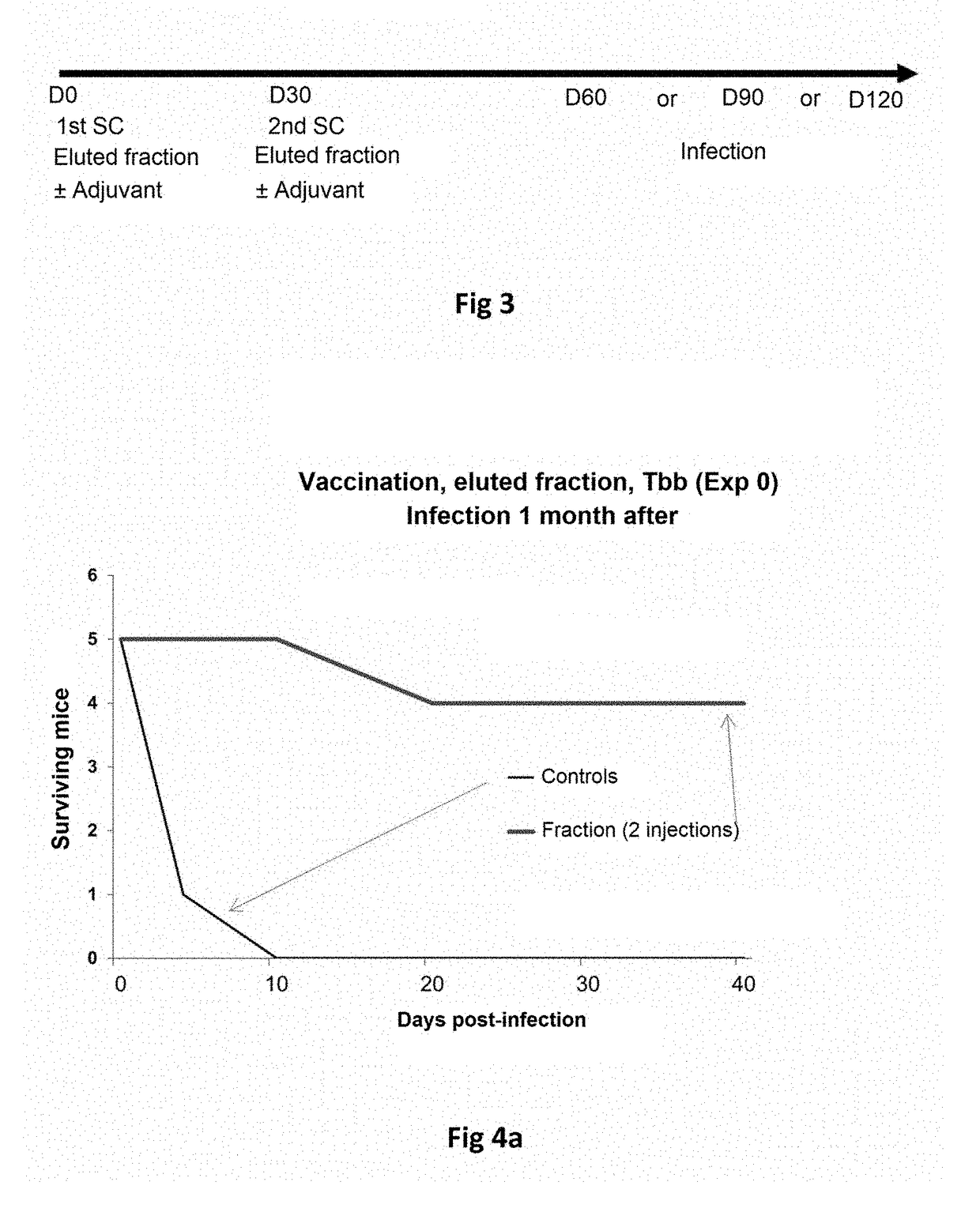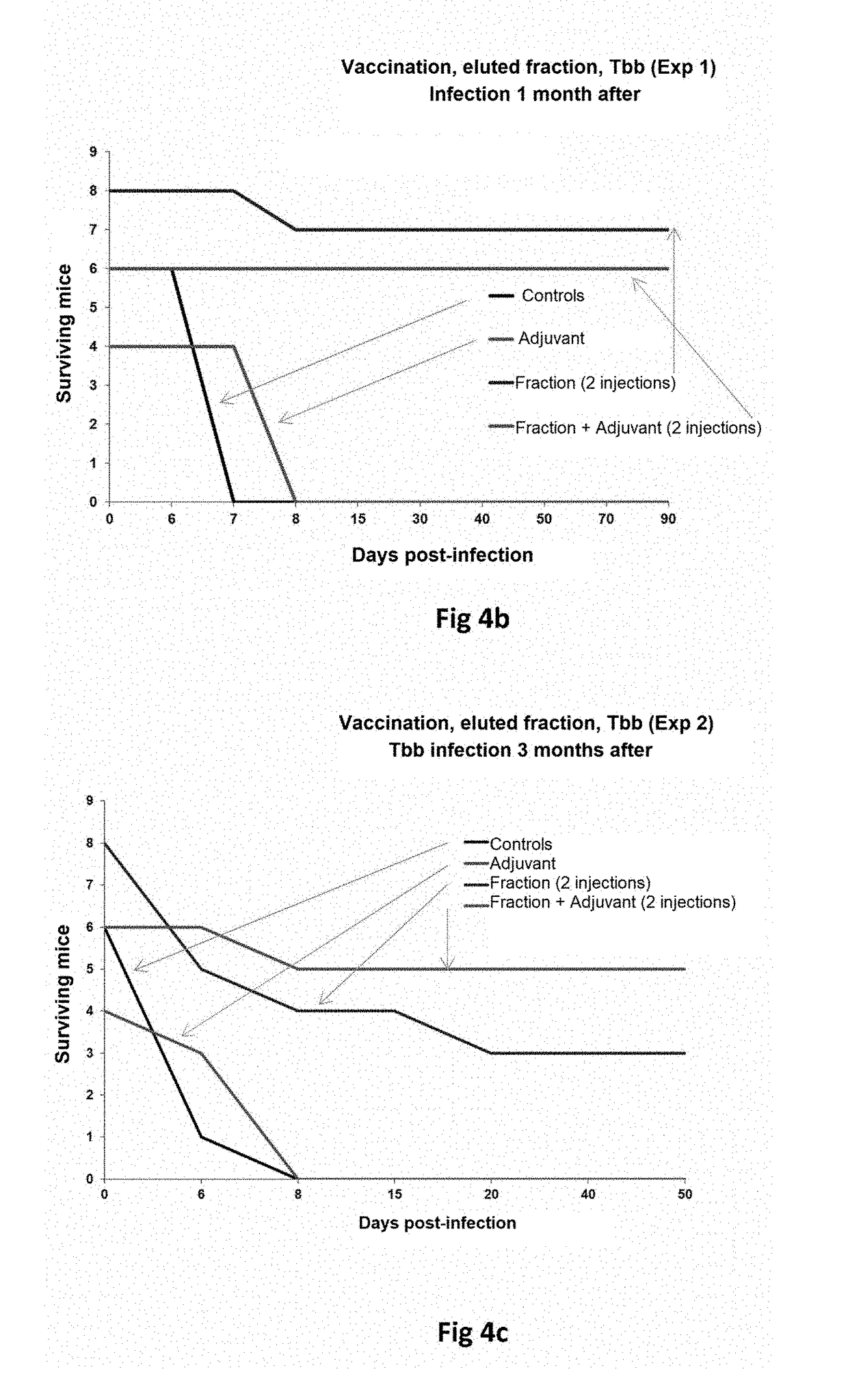Treatment and detection of trypanosomes
- Summary
- Abstract
- Description
- Claims
- Application Information
AI Technical Summary
Benefits of technology
Problems solved by technology
Method used
Image
Examples
example 1
n of Parasite Growth by a Monoclonal Antibody Against Kinesin
[0128]In vitro, monoclonal antibody Mab1 was added to parasites in co-culture with feeder layers (Mab1 concentration in the culture: 4 μg / mL). Compared with the control, Mab1 inhibits parasite growth whereas the IgG2b isotype control (concentration: 4 μg / mL) has no effect (FIG. 1).
[0129]In vivo, injecting Mab1 (200 μg in 200 μL of PBS intraperitoneally) into mice parasitized for 2 days inhibits the development of parasitemia (expressed in log 10 of parasite number per mL of blood); the IgG2b isotype control (200 μg in 200 μL of PBS intraperitoneally) has no effect (FIG. 2).
example 2
rotection Against Parasites by Vaccination
[0130]The fraction enriched in TbKHC1 protein is injected (10-20 μg / mouse) twice, with a 30-day interval (D0 and D30), into the mouse via the subcutaneous route, with or without adjuvant (saponin, 25 μg per mouse). Control mice receive medium alone with or without adjuvant.
[0131]The mice are infected 1, 2 or 3 months after the last injection (see FIG. 3).
[0132]The parasitemia of the vaccinated mice and of the controls (medium alone±adjuvant) is evaluated daily for 25 days post-infection, then once per week thereafter. The results are presented in FIG. 4.
[0133]Control mice having received the medium with or without adjuvant die around the 7th-8th day post-infection. Remarkably, 22 of 26 mice (84.6%) having received two injections of TbKHC1 protein+adjuvant survive. Adding the adjuvant to TbKHC1 protein increases the survival rate of vaccinated mice and the duration of efficacy of the vaccine.
example 3
on with TbKHC1 Induces Cross-Protection
[0134]Mice are immunized with TbKHC1 protein and then infected 2 months after either with the same trypanosome or with a trypanosome of another species.
Infection 2Number ofmonths afterOrigin ofsubcutaneousthe lastTbKHC1 forinjections +injection +ParasitemiaBatchesimmunizationsaponinadjuvantand survivalBatchT. brucei2T. b. No parasite1 (14gambiensegambiensedetected in themice)mice; allsurvive at 50daysBatchT. brucei2T. b. bruceiNo parasite2 (14gambiensedetected in themice)mice; allsurvive at 50days
[0135]These results show cross-protection, wherein TbKHC1 protein of T. brucei gambiense is capable of inducing protection against infection with T. brucei brucei.
PUM
| Property | Measurement | Unit |
|---|---|---|
| Fraction | aaaaa | aaaaa |
| Antigenicity | aaaaa | aaaaa |
Abstract
Description
Claims
Application Information
 Login to View More
Login to View More - R&D Engineer
- R&D Manager
- IP Professional
- Industry Leading Data Capabilities
- Powerful AI technology
- Patent DNA Extraction
Browse by: Latest US Patents, China's latest patents, Technical Efficacy Thesaurus, Application Domain, Technology Topic, Popular Technical Reports.
© 2024 PatSnap. All rights reserved.Legal|Privacy policy|Modern Slavery Act Transparency Statement|Sitemap|About US| Contact US: help@patsnap.com










